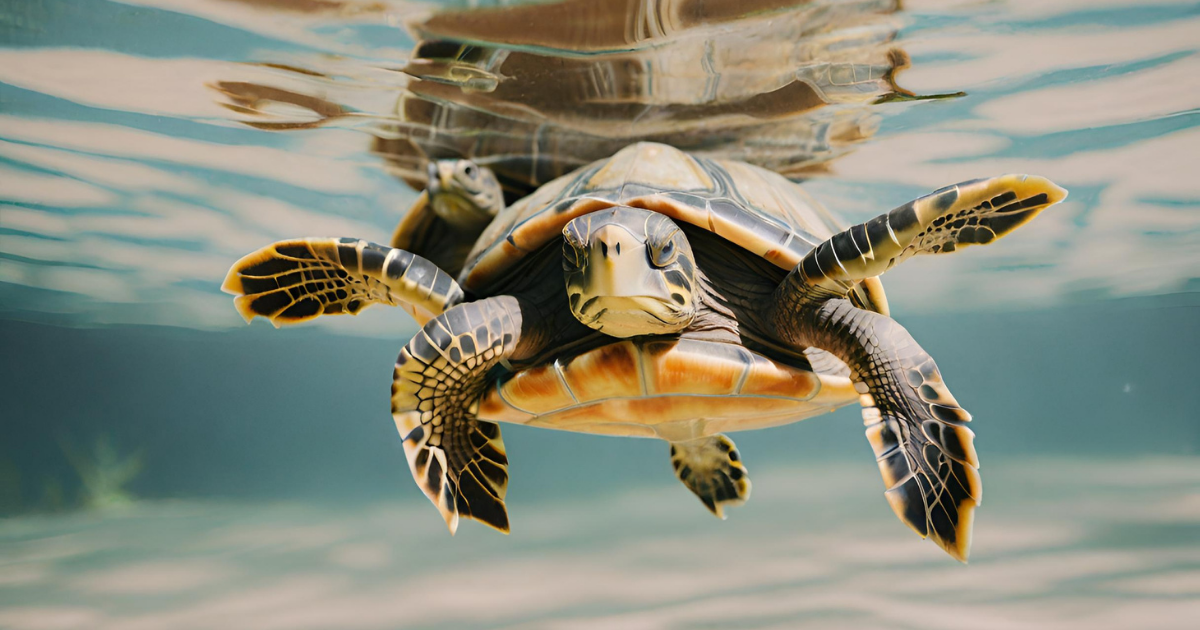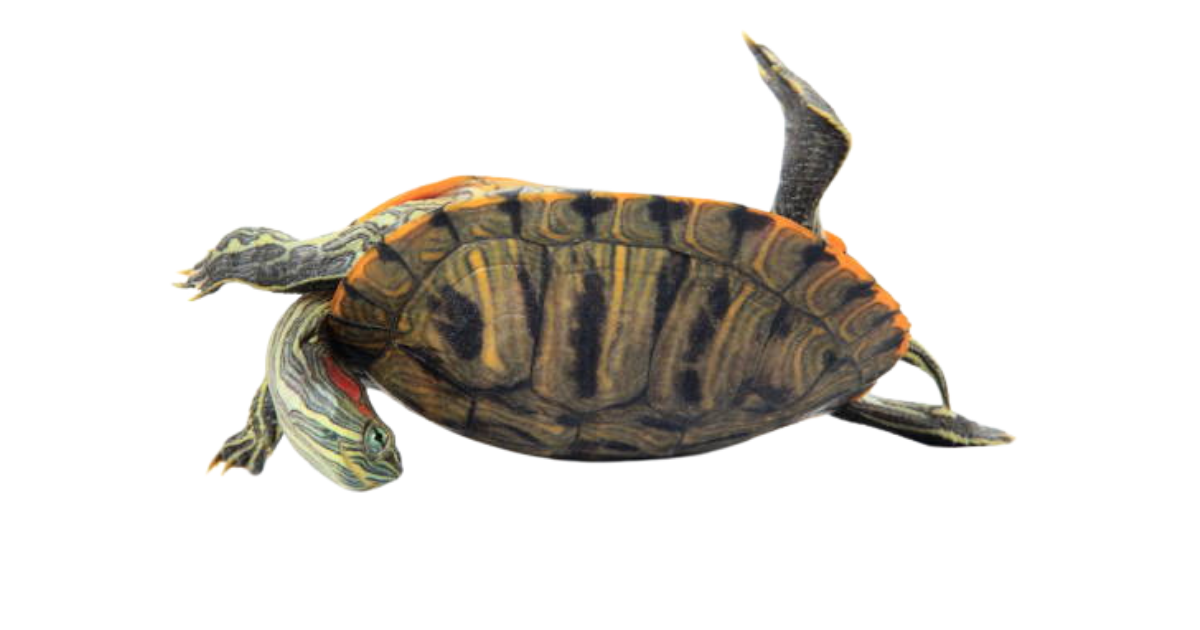Turtles find it difficult to straighten themselves if they get upside down. The bigger the body size, the bigger the challenge gets. Sometimes, it can be life-threatening for them, too. How long can a turtle be upside down?
Depending on the physical condition of the turtle and the location it gets upside down, a turtle can survive from an hour to a few days. The turtle can suffer from dehydration if it is stuck under direct sunlight or has just recovered from pneumonia.
Turtles can get tripped and upside down in different ways. Let’s explore the reasons for the incidents and if you can help them in any way.
How Long Can A Turtle Be Upside Down
The ideal answer to the question depends on different factors. A healthy turtle can survive longer than a weak or ill one. Besides, where the turtle turns upside down is also an important fact.
Small turtles get dehydrated quickly and are prone to death because they turn upside down more than adult ones. They may find it difficult to survive more than an hour if they get upside down under direct sunlight. Larger turtles or tortoises have a better chance of survival.
Getting upside down in a shadowy place may not be very dangerous for a turtle. They can survive a few hours or even days by going into hibernation. You should keep a watchful eye on your pet turtle and ensure they do not remain flipped for a longer period of time.
How Do Turtles Get Flipped Over?
You might have wondered what causes turtles to flip over. Well, they can be flipped because of numerous reasons, such as:

Do turtles eat green apples?
Wave on the Beach
Waves are among the major reasons for turtles getting flipped in the wild. Sometimes, the turtles can get off balance by sudden waves and get flipped over. Sadly, however, they do not get flipped back by the wave naturally. You may see them in such conditions mostly in summer, as turtles hibernate during the winter.
Aggressive Interactions
Though turtles have a reputation as gentle and polite, they can be aggressive sometimes. Two male turtles can engage in combat, and one may try to flip the other. Sometimes, a male turtle may run after a female one, and the female can throw dust in its eyes. This can lead to momentary blindness, and it can get tipped off.
Human Interference
This is a common and very sad aspect. Children, or even adults, sometimes flip over turtles upside down. They do it for fun but fail to understand the danger the act poses. Turtles can die if they fail to flip themselves back. Improver handling can also cause the problem. You must be careful while handling or playing with them.
Crossing Uneven Terrain
Another natural reason for turtles to get flipped over is their navigation on uneven surfaces. They can get tipped or fall from a height because of unawareness. This can also happen to pet turtles in their tanks.
Predators Interactions
Turtles have various predators, including mammals, snakes, fish, and other turtles. They can be attacked and flipped by their predators. It makes them defenseless and an easy target to prey on.
Why Should A Turtle Not Be Upside Down for Long?
Pet owners, especially children, often flip turtles for fun. You must not do such things and forbid the children as well to do so. It poses various threats to this poor reptile.
Trouble in Breathing
You must remember that turtles are naturally designed to breathe when they stand up. They find it difficult to breathe when they get flipped. Their insides press on their lungs and make it tough to get enough air. This can make them sick and affect their overall health.
Risk of Swallowing Things
There is a bigger chance that the turtle might accidentally swallow water or other stuff when they are upside down. In normal situations, turtles are good at getting rid of extra water. However, when they are upside down, it messes that ability up. Swallowing stuff can lead to choking and eventually pose life threats.
Blood Flow Issues
When the turtle gets flipped, their blood cannot reach certain parts of their body. This can make it hard for oxygen to reach their important body parts. You see, they are already finding it difficult to breathe. On top of that, the oxygen they are inhaling does not reach their body parts. It makes them sick very quickly.
Makes Them Vulnerable to Other Animals
Turtles become completely defenseless when they are flipped. They cannot take any defensive action to protect themselves against their predators. It makes them an easy target for their predators. Turtles have tough shells that protect them from predators. They lose this advantage when they are upside down. Therefore, being flipped makes them an easy catch for other animals.
Can Turtles Flip Back on Their Own?
Yes, turtles can flip back on their own. This is not true all the time, though. Smaller turtles find it easy to do so. The legs of turtles are designed for moving forward. They cannot use it to push against the ground for self-righting.
However, if the ground is hard, they may be able to self-right themselves with some time. It is not possible in sandy areas, though. They may find it easier if there is any log or stones to get help. It is one of the reasons to add logs and pebbles in their tanks in captivity. You can watch this video to see how turtles get up:
What to Do When You Notice Flipped Turtles?
Seeing flipped turtles might not be a rare scenario for you if you are from areas where turtles are common. Or, your pet turtle can also get flipped sometimes. You should be kind and help them get up.
- Approach the flipped turtle calmly and without rushing. Sudden movements can cause additional stress on them.
- If the turtle is on the road, be careful of traffic
- Lift the turtle by its sides without putting excessive pressure on the shell or limbs. Be gentle to prevent any harm
- Carefully turn the turtle back to its upright position and ensure it is facing the same direction it was heading.
- If the place is uneven or too crowded, you had better not release it there. Instead, take the turtle to a safe place and release it.
- If it was your pet turtle and you are suspecting the turtle was in this position for long, give it a bath. This will help the turtle recover from dehydration.
- In case your reptile pet drowns in the water of the tank, try to force out the water from the lungs.
- You must wash your hands after handling wild turtles
Anyway, don’t think that these shells are a burden for them. They are heavy but turtles need shells to survive.
FAQ
More questions coming to your mind? Check the below questions; you may find them helpful.
Can turtles breathe while upside down?
Yes, turtles can breathe while upside down, but with much difficulty. They can breathe better with ease when they are standing up. Getting flipped causes several issues, along with breathing difficulties.
What happens if a turtle is on its back in water?
Turtles find it difficult to right themselves when they get on their backs in water. The risk of drowning increases as the turtle cannot easily access air. Prompt external assistance is crucial to prevent respiratory distress and ensure the turtle can return to a normal position.
Can a turtle help another turtle to get up?
No, turtles lack the ability to help each other if one is flipped over. Their anatomy is not suited for such assistance. A turtle needs human intervention if they get overturned.
Conclusion
Staying in an upside-down position for long is not safe for turtles. This poses various health issues, including life threats. Their anatomy and physical structure make it difficult for them to self-righting.
You must be kind and help them when you see them flipped over. Positioning some logs and pebbles might come in handy for your turtles in captivity. You should be careful and make sure they are in their correct stature for a comfortable life.
